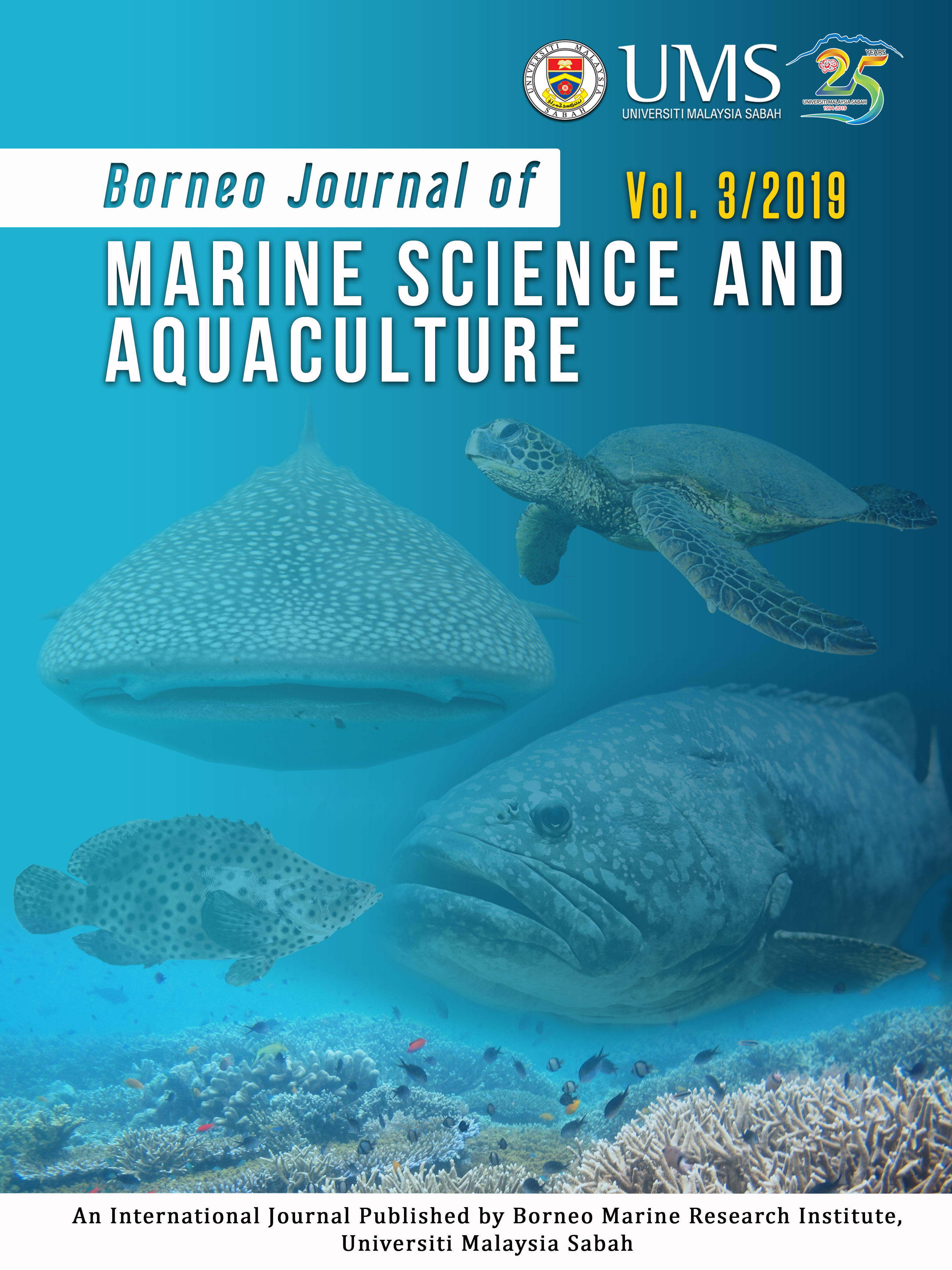Degeneration of the olfactory epithelium in the Anguilid eels by hormone treatment
DOI:
https://doi.org/10.51200/bjomsa.v3i2.1426Keywords:
Olfactory organ, Tropical eel, Spawning migrationAbstract
While the olfactory cue hypothesis has been proposed for spawning migration of silver eels, it has been shown that olfactory cells and associated mucus cells degenerate in male and female eels after hormonally induced sexual maturation. However, the degeneration of the olfactory organ could be a real event in the sequence of maturation, or may be an unnatural side effect of the hormone treatment itself. We morphologically and histologically examined the olfactory rosettes of hormone-untreated and hormone-treated (mixture of hCG and PG) giant mottled eel (Anguilla marmorata) and Japanese eel (A. japonica). The olfactory rosette from all the hormone-treated specimens significantly degenerated at various degeneration levels even in sexually immature specimens, indicating the side effect of the hormone-treatment. However, a sexually immature non-hormone treated female A. marmorata (87.4 cm TL, 199.4 g BW, at less advanced maturity) had slightly degenerated olfactory rosette. Further studies should focus on conducting natural degeneration of the olfactory rosette during the sexual maturation in tropical eels.
References
Barbin, G.P., Parker, S.J. & McCleave, J.D. (1998). Olfactory clues play a critical role in the estuarine migration of silver-phase American eels. Environmental Biology of Fishes 53, 283−291.
Kagawa, H., Tanaka, H., Ohta, H., Umuma, T. & Nomura, K. (2005). The first success of glass eel production in the world: basic biology on fish reproduction advances new applied technology in aquaculture. Fish Physiology and Biochemistry 31, 193−199.
Karlsson, L. (1984). Migration of European silver eels, Anguilla anguilla. PhD. Thesis, Uppsala University, Uppsala, 745 pp.
Matsuya, N., Nagihara, S., Wada, T., Ijiri, S. & Adachi, S. (2015). Morphological and physiological characteristics of an ocean-migrating Japanese eel Anguilla japonica off Fukuoka, Japan. Coastal Marine Science 38, 8–11.
McCleave, J. D. & Power, J. H. (1978). Influence of weak electric and magnetic fields onturning behavior in elvers of the American eel Anguilla rostrata. Marine Biology 46, 29–34.
Nishi, T., Kawamura, G. & Matsumoto, K. (2004). Magnetic sense in the Japanese eel Anguilla japonica as determined by conditioning and electrocardiography. Journal of Experimental Biology 207, 2965–2970.
Nishi, T. & Kawamura, G. (2005). Anguilla japonica is already magnetosensitive at the glass eel phase. Journal of Fish Biology 67, 1213–1224.
Nishi, T., Kawamura, G. & Sannomiya, S. (2005). Anosmic Japanese eel Anguilla japonica can no longer detect magnetic fields. Fisheries Science 71, 101−106.
Nishi, T., Archdale, M.V. & Kawamura, G. (2018). Behavioural evidence for the use of geomagnetic cue in Japanese glass eel Anguilla japonica orientation. Ichthyological Research 65, 161–164.
Pankhurst, N.W. & Lythgoe, J.N. (1983). Changes in vision and olfaction during sexual maturation in the European eel Anguilla anguilla (L.). Journal of Fish Biology 23, 229–240.
Sorensen, P.W. & Pankhurst, N.W. (1988).
Histological changes in the gonad, skin, intestine and olfactory epithelium of artificially-matured male American eels, Anguilla rostrata (LeSueur). Journal of Fish Biology 32, 297–307.
Souza, J.J., Poluhowich, J.J. & Guerra, R.J. (1988). Orientation responses of American eels, Anguilla rostrata, to varying magnetic fields. Comparative Biochemical Physiology 90A, 57–61.
Tesch, F.W. (2003). The Eel. Blakcwell Science Ltd., Oxford, UK.
Tesch, F.W. & Rohlf, N. (2003). Migration from continental waters to the spawning grounds. In: Eel Biology (K. Aida, K. Tsukamoto & K. Yamauchi, eds), pp. 223–234. Springer, Tokyo, Berlin, New York, London.
Westin, L. (1990) Orientation mechanisms in migrating European silver eel (Anguilla anguilla): temperature and olfaction. Marine Biology 106,175–179.






